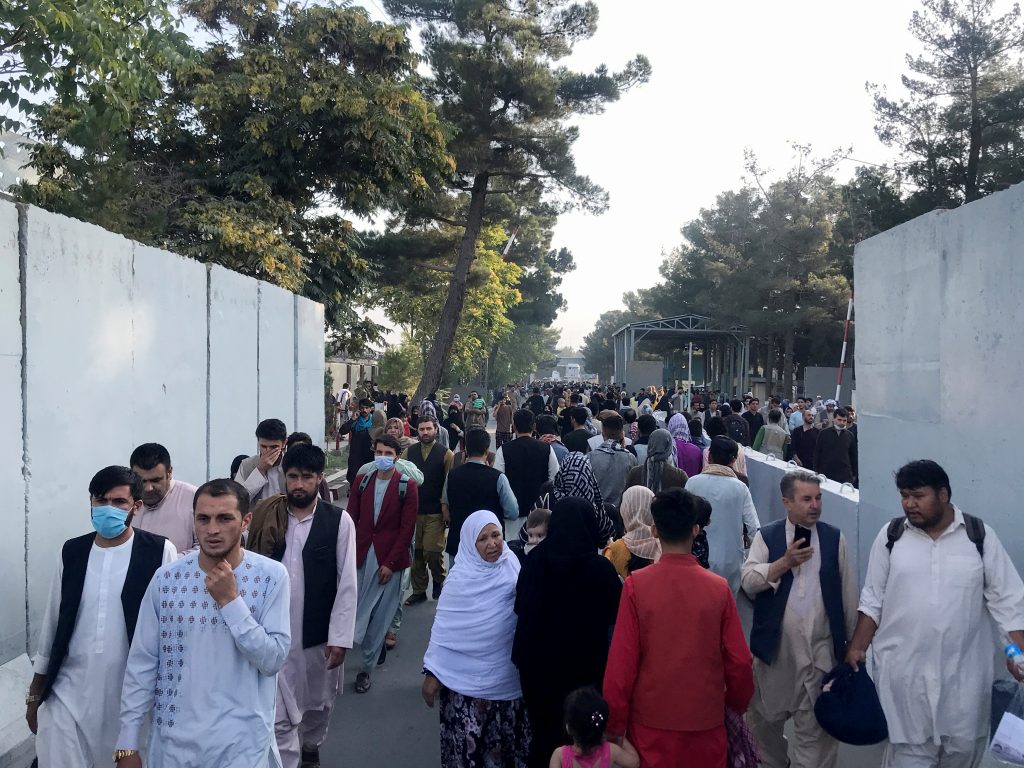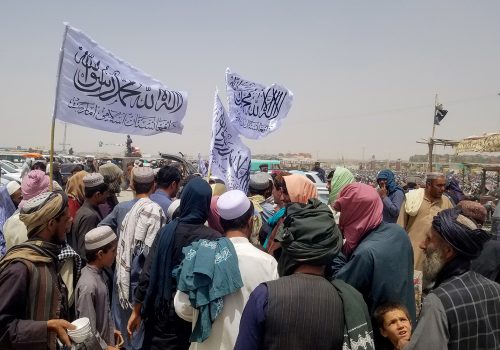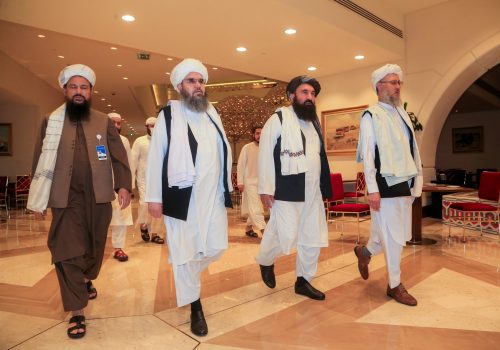After capturing Kabul at lightning speed—surprising analysts and security experts alike—the Taliban are now poised to assume leadership once again in Afghanistan. A day after declaring a “general amnesty” in their first press conference on Tuesday, August 17, a spokesperson for the group made significant promises about the future of the country. These include establishing an inclusive government, upholding the rights of women, and press freedom, albeit with caveats. For example, they have stated that the country will be an Islamic Emirate, thus defining inclusivity within the Islamists’ parameters, limiting women’s rights within the “framework of Sharia,” and forcing the press to respect “national values, national unity, national consensus” as well as “Islamic values.” These statements about the future of Afghanistan were meant to the allay worries expressed by the international community and the Afghan people. However, these caveats clearly warrant skepticism.
Considering the history of Taliban rule between 1996 and 2001, their incessant attacks on female schools over twenty years of violent campaigns, targeted assassinations of government officials in the weeks before capturing Kabul, a predilection for violence and their ideological tint, there is widespread fear that the country will descend into the era akin to the Taliban of the 1990s. On the other hand, some are optimistic that Taliban leadership has learned the lessons of moderation and will not make the same mistakes of the past. The group’s diplomatic activities in recent years, including reaching a deal with the United States in 2020, meeting with Russian and Chinese officials in July 2021, gaining the trust of Iran, and repeated reassurance that they will not allow Afghan soil to be used by terrorists, provide the impression that a new Taliban has emerged.
The volatility of the situation on the ground and lack of clarity regarding the potential roles of domestic and international actors is fueling these two conflicting perspectives and dominating the public discourse. As eminent international relations theorist Joseph Nye has noted, “there is no single future until it happens” and there is no way to make a definitive prediction about the outcome of an ongoing crisis. As the legendary phrase of American baseball legend Yogi Berra says, “it ain’t over till it’s over.” However, there are various plausible situations which can be explored.
Four in particular warrant attention in the near to medium term, assuming that the Taliban are not interested in an immediate return to 1996 dynamics.
- Emergence of a moderate Afghanistan: The best case scenario suggests that the Taliban adheres to, in its entirety, the promises they have made since reaching Kabul. That means the ruling Taliban behaves responsibly as a governing political actor both within the country and in the international arena. This will not usher in a liberal democratic state and a highly inclusive society, but some forms of limited inclusivity will mark its governance. Women’s participation will not be completely curtailed and pushed back twenty years, but it will be limited. Sharia will remain the overarching umbrella in determining the limit of participation and the role women can play. Media will have limited leeway, and exercising independence beyond state-enforced boundaries will be dealt with via severe punitive measures. State institutions will be separated between those enforcing moral laws such as virtues of religion and ethics and those which exact repressive measures for political reasons. It will not overtly support transnational terrorist organizations and allow them to operate within the country, but the Taliban ideology will continue to be a source of inspiration for engaging in violence.
- Patchwork of moderation and extremism: While the central Taliban leaders and state will not openly pursue austere measures in implementing religious precepts and will provide some support to inclusion of women, local leaders and administration will continue to persecute any deviation from their interpretation of Islam, including dress code and behavior. This will create a patchwork of spaces within the country and policies. Such an environment will allow the thriving of various violent extremist groups including transnational terrorist groups such as the Islamic State and Al Qaeda. The emergence of “war lords” and “extortionists” to keep the flow of illicit earnings may exacerbate the situation. External forces may encourage one or more groups to irritate the incumbent.
- Fractious and volatile: Future resistance against the Taliban government is not unlikely akin to the 1996-2001 period, when the Northern Alliance thrived under the leadership of Ahmed Shah Massoud. The resistance may not have a national leadership, however, and local leaders of various ethnic groups might emerge. The Taliban may face fractures, too, between those who would prefer to implement harsher laws and those who would prefer a more moderate stance to maintain the support of neighboring countries as well as global powers such as China and Russia.
- Reversal in steps: In this scenario, the Taliban will initially implement steps that resemble openness and an inclusive system. It will appear to be a gradual move towards the emergence of the moderate Afghanistan scenario. However, after securing international recognition, a seat in the international community, and investments in various infrastructure and mining projects, the government will begin to walk back on political and social fronts and impose restrictions on various political and social activities. A thin line will be drawn under the pretext of Islamic ethos. Fooling the international community, the incumbent will be able to establish a fearful state—a new and more resilient edifice.
The future is neither preordained nor can it be predicted with utmost certainty, but considering the nature of the dominant actors, the context, and probabilities, these four scenarios provide an estimation of Afghanistan’s prospective future trajectories. There is no hierarchy in these scenarios and other developments, both home and abroad, that can shape the pathway.
Dr Ali Riaz is a non-resident senior fellow at the Atlantic Council South Asia Center and a distinguished professor at Illinois State University.

The South Asia Center is the hub for the Atlantic Council’s analysis of the political, social, geographical, and cultural diversity of the region. At the intersection of South Asia and its geopolitics, SAC cultivates dialogue to shape policy and forge ties between the region and the global community.
Related content
Image: People walk at the entrance gate of Hamid Karzai International Airport in Kabul, Afghanistan, August 16, 2021. REUTERS/Stringer



